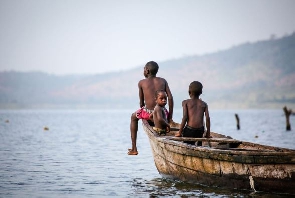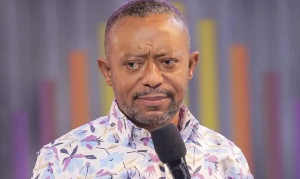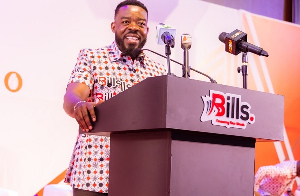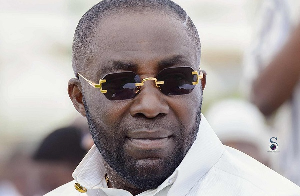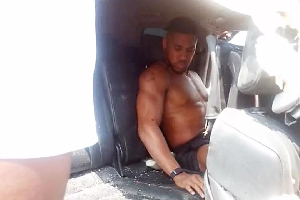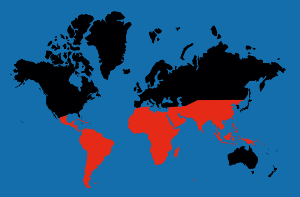Background of The Issue
Children are a blessing in many Ghanaian homes and having children is an advantage to many Ghanaian families. Sometimes, parents are unable to provide for their children and in an effort to provide them with a better future, parents send their children to live with extended family relations or place them in the care of adults in nearby communities to learn a trade for a small amount of money (Legatum Foundation, 2009).
Unfortunately for many of the children who live in and around agricultural hubs like the Volta Lake they often end up as victims of child labor. Children as young as 4 years old are placed in the care of masters to learn a trade such as fishing or fish mongering.
These children work long hours sometimes between 10 to 17 hour a day often jumping into frigid parasite infested water to untangle fishing nets caught underwater (Legatum Foundation, 2009).
As punishment, their masters sometimes deprive them of food leaving these children malnourished. They also often undergo emotional and physical abuse at the hands of their masters. These children are unable to gain access to a formal education due to long working hours and working with their masters being viewed as some sort of apprenticeship to learning the fishing trade (Fawcett, 2013; Legatum Foundation, 2009).
Even though according to the Ghanaian Constitution and the Education Act, kindergarten, primary and Junior secondary school is free and compulsory from kindergarten through junior high school, children continue to be trafficked because the economic benefit of fishing is equivalent to finishing junior secondary school (Legatum Foundation, 2009).
Even though parents might be aware of the free access to education available to children, due to economic hardships, parents are unable to afford the associated fees that arise from children being enrolled in schools such as school books and uniforms (Fawcett, 2013).
The issue of child labor on the Volta Lake is a complex one that is imbedded in the economic reality of fishing communities. Due to increasing foreign operations of fishing on large scales, local fisherman are being forced to hire cheap labor(children) in order to compete in the fishing markets (Manful, 2019). The local fisherman rely on the small hands of young children to retrieve small fishes from the small netting sizes, squeeze into small holes and paddle the canoes and boats (Manful, 2019; Fawcett, 2013).
Progress: How Far with Protecting Our Children?
The Ghana Child Labour Strategic Initiative was established in 2007 to provide a direct solution to child Labour and trafficking along Lake Volta (Legatum Foundation, 2009). The initiative provided services to both families and fishermen. Families were provided with training on alternative avenues for incomes to reduce the incidence of selling children into child labor as a source of income.
Fisherman also received information of the effects of child labor on children as well as the legal repercussions associated with engaging in recruitment or owning child labourers. Additionally, the fishermen were proved with alternative measures for improving their fishing business without the use of child labors such as microloans or alternative business ideas like farming (Legatum Foundation, 2009).
In 2017, Ghana also launched the National Plan of Action for the Elimination of Human Trafficking (Ghana Web, 2017). This plan is a national approach to reduce all forms of child labor to the barest minimum by 2021 with emphasis on strong social, policy and institutional foundations (International Cocoa Initiative, 2018).
Efforts under this mandate include governmental efforts to increase accessibility of public schools to children along the Volta Lake, provision of uniforms, extending the free education to cover secondary school (high school), and building more schools to reduce the distance that students must travel (Government of Ghana, 2017; US Department of State, 2018). Yet Ghanaian children in communities that engage agricultural practices like fishing continue to be exploited the child labor.
To comply with international standards for protection of children against child labour, Ghana has made amendments to protect children against exploitation. For example, the minimum for work in now 15 years with 18years being the minimum age to engage in hazardous work (US Department of State, 2018).
Additionally, there are several agencies responsible for child labor law enforcement such as the Ministry of Employment and Labor Relations which is tasked to enforce child labor laws, the Ghana Police Service under the Ministry of Interior which is tasked to investigate and arrest child labor reports, the Ministry of Justice which is supposed to persecute child labor and child trafficking cases and the Ministry of Gender, Children and Social Protection which is supposed to lead government efforts to combat human trafficking and protect children against exploitation( Bureau of International Labor Affairs.( 2017; US Department of State, 2018). The ministry for Gender, Children and social protection also launched a toll-free helpline and text message system in December 2017 for reports of abuse of various kinds (Ghana Web, 2017).
Finally, the government along with other NGOs have shelters in place to provide housing and rehabilitation services for children who have been rescued from Lake Volta. These children are provided with education, recreational facilities and the option of being reunited with families given appropriate circumstances (Legatum Foundation, 2009; CNN, 2019).
What Are We Missing? Gaps With The Current Approach
As of 2019, there are still children who go out in boats everyday against their will endangering their lives with no access to education (CNN, 2019). This is because current efforts to safeguard children against exploitation on the Volta Lake are not enough. Some of the gaps are: there are currently limited availability of shelter spaces for children (US Department of State, 2018) and the current ones need updated infrastructure (CNN, 2019).
While the free education for children is a step in the right direction, there are other factors that hinder children’s access to education and a healthy environment such as parents ability to provide healthcare and nutrition for their children as well as their ability to provide their children with school uniforms and materials for school.
Without the necessary support for economic empowerment to lift families out of poverty, some children are retrafficked (Legatum Foundation, 2009). there is also limited interdepartmental/ interministry collaboration between the different governmental agencies that are mandated to provide services that stamp out child exploitation on the Volta Lake (US Department of State, 2018; Bureau of International Labor Affairs, 2017).
Even though there is a tollfree helpline, that information is not readily available from the Ministry of Women, Gender and Social Protection’s website. In other documentation that address efforts to eradicate child labor on the Volta lake, the toll-free helpline is not listed. It is possible that even though this service is available, knowledge of it is not widespread and hence people are unable to utilize it.
What Else Can We Do to Help Eradicate Child Labor in Ghana?
If Ghana would like to meet its goal of eradicating child labor along the Volta Lake by the year 2021, more effort will have to implemented to achieve this. Ghana can:
provide more training programs for parents such as basket weaving, sowing or hair dressing that lead to higher levels of economic emancipation from poverty provide schools for each community with enough resources such as teachers, teaching materials, textbooks and uniforms for each child
allocate more funds to the provision of services for communities along the Volta Lake
organize forums at the grassroots level to determine what the needs of the communities are in efforts to provide targeted projects revamping the toll-free hotline with commercials on local TV stations and radio stations so that communities along the Volta Lake are aware of all the services that can be amassed from utilizing the helpline.
References
Bureau of International Labor Affairs. (2017). Ghana: Child Labor and Forced Labor Reports. Retrieved from https://www.dol.gov/agencies/ilab/resources/reports/child-labor/ghana
CNN. (2019). Ghanaian minister responds over child labor. Retrieved from https://www.cnn.com/videos/tv/2019/03/08/ctw-ghana-minister-information-lake-volta.cnn
Fawcett, S.L. (2013). Child Labor and Enslavement in Ghana’s Lake Volta Fishing Industry. The Child Labor Coalition. Retrieved from http://stopchildlabor.org/?p=3554
Ghana Web. (2017). Gender Ministry launches helpline for victims of domestic violence. Retrieved from https://www.ghanaweb.com/GhanaHomePage/NewsArchive/Gender-Ministry-launches-helpline-for-victims-of-domestic-violence-611316
Government of Ghana. (2017). Government Launches Phase Two National Action Plan Child Labour. Retrieved from http://www.ghana.gov.gh/index.php/news/4643-government-launches-phase-two-national-action-plan-child-labour
International Cocoa Initiative. (2018). Summary of the Phase II of the National Plan of Action for the Elimination of the Worst Forms of Child Labour (NPA2: 2017 – 2021). Retrieved from https://cocoainitiative.org/wp-content/uploads/2018/05/Summary-of-the-Ghana-Phase-II-of-the-National-Plan-of-Action-for-the-Elimination-of-the-Worst-Forms-of-Child-Labour.pdf
Legatum Foundation. (2009). Ghana Child Labour: Fighting Modern-Day Slavery. Retrieved from https://www.legatum.org/initiative/Ghana-Child-Labour
Manful, K. (2019). Ghana child slavery: When seeking context overlooks harm. AlJazeera.com. Retrieved from https://www.aljazeera.com/indepth/opinion/ghana-child-slavery-seeking-context-overlooks-harm-190329101911983.html
US Department of State. (2018). OFFICE TO MONITOR AND COMBAT TRAFFICKING IN PERSONS 2018 Trafficking in Persons Report . Retrieved from https://www.state.gov/j/tip/rls/tiprpt/countries/2018/282661.htm
Opinions of Tuesday, 7 May 2019
Columnist: Ruth Mma Azuma Dzarbeng

